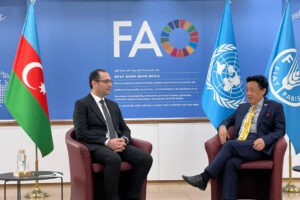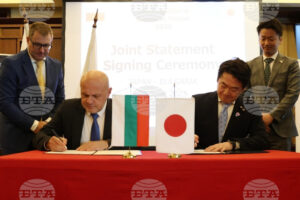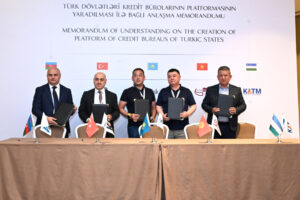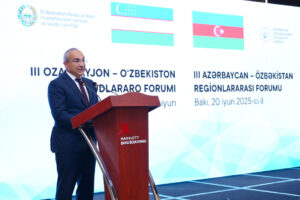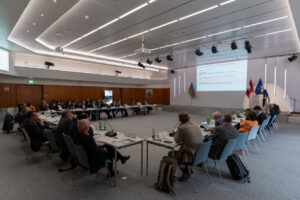Tokyo, 13 June, /AJMEDIA/
With China showing no signs of lifting its import ban on Japanese fisheries products, Japan has been diversifying export channels to other markets, most notably Southeast Asia and the United States, in response to what critics say is an economic coercion measure by the world’s second-largest economy.
Beijing’s unilateral measure — which Japan dismisses for not being based on science — is yet another reminder that in light of economic security, Tokyo should further reduce its dependence on the Chinese market for not only seafood but other sectors so as to minimize risks associated with trade, analysts say.
As part of diversification efforts, Japan recently unveiled a goal of doubling its exports to Thailand of scallops, a leading product of the country’s seafood exports, to 2.4 billion yen in 2024 compared with a year earlier.
The announcement came as Japan’s exports of the bivalves jumped by 3 times to Vietnam, 2.3 times to Thailand and 1.7 times to the United States in the five months to March from year-earlier levels, according to government data.
Indonesia, Malaysia and Canada have also increased scallop imports from Japan since China imposed its ban following the start in August 2023 of the release of treated radioactive water into the Pacific Ocean from the crippled Fukushima Daiichi nuclear power plant, an action the International Atomic Energy Agency approved but Beijing condemned.
But rising scallop exports to non-China markets have not been enough to cover the loss of the biggest buyer, and Japan should further redirect supply chains and step up sales promotion campaigns with higher export targets, say trade experts.
In 2022, China accounted for 51.3 percent of Japan’s scallop exports. Taiwan came second at 12.3 percent, the United States third at 8.6 percent and South Korea fourth at 8.3 percent, government data show.
In a meeting with his Thai counterpart Thamanat Prompow on May 3 in Bangkok, Japanese farm minister Tetsushi Sakamoto underlined the safety of Japanese seafood and sought cooperation over Tokyo’s campaign to expand sales in Thailand.
Sakamoto, minister of agriculture, forestry and fisheries, was alluding to China’s assertion that Japan was discharging “nuclear-contaminated water” into the sea.
Sakamoto and Thamanat “underscored the cruciality of agricultural and fisheries trade facilitation between the two countries,” according to a joint press release issued after the meeting.
Thanks to a Japanese food boom in Thailand, analysts believe Japan will meet the 2024 scallop export target for the Southeast Asian country, with some calling for a “more ambitious target” in the coming years.
“We can expect robust growth in seafood exports to Thailand because more and more Thai people come to Japan, propelled partly by a weak yen, and get familiar with Japanese food,” said Seiya Sukegawa, a professor of Asian economics at Kokushikan University in Tokyo. “Scallops are well received, given that they can be used also for Chinese and Italian cuisine.”
“Thai people love Japanese food, of which they have a healthy and positive image,” he said in an interview, citing a 2023 Japan External Trade Organization survey showing the number of Japanese restaurants in Thailand rose 1.9-fold to 5,751 from the 2018 level.
To make the boom sustainable, Sukegawa, concurrently a visiting professor at Thai-Nichi Institute of Technology in Bangkok, suggested Japanese businesses closely study Thai people’s dietary patterns so they can further penetrate into the local market.
Among other initiatives, Japan’s farm ministry, JETRO and the Consulate General of Japan in Houston jointly launched an “export support platform” in the city last December to boost shipments of Japanese farm and seafood products and promote Japanese food in Texas, the second biggest market in the United States.
Japanese companies have also started shipping fresh fisheries products to Colorado, a largely untapped market for Japanese seafood in the United States, using United Airlines direct flight services between Narita airport near Tokyo and Denver, according to farm ministry officials.
With Japan and China remaining apart over the release of treated water and fisheries trade issues, Beijing’s action apparently aimed at isolating Tokyo has not drawn international support, and analysts suspect Chinese leaders may be waiting for a good time to gradually lower “the fist of anger” that they raised high in the air.
“I don’t think China’s behavior is effective nor successful internationally. In 2023, China accused Japan of discharging the water in ASEAN meetings such as ASEAN-plus-three forums, but not many ASEAN members were convinced by China’s arguments,” said Kei Koga, an associate professor of Indo-Pacific security at Nanyang Technological University in Singapore.
The ASEAN-plus-three involves the 10-member Association of Southeast Asian Nations plus Japan, China and South Korea.
“Rather, this unilateral maneuver is more related to domestic factors as China has already taken a strong stance against the water, it cannot easily change such a stance without justifiable reasons,” Koga said in an email.
He urged Prime Minister Fumio Kishida’s government to maintain transparency over information related to the treated water and proactively disseminate such information with its validity backed by internationally endorsed scientific methods.
“This will be a long game,” Koga said. “And at the same time Japan needs to keep informing China of information and data with scientific evidence.”
© KYODO





